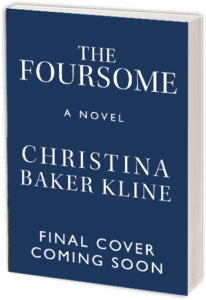Sometimes when you’re revising it helps to have a specific assignment. Last week in this space I listed some exercises that my fiction-writing students find useful. Here are some revision ideas that my memoir and journalism students particularly like:
 1) Write down three adjectives (beautiful, aggressive, haughty) that describe a character in your narrative/memoir. (Be sure the adjectives describe different qualities, not the same ones. For instance, handsome, well-groomed, muscular are too similar, as opposed to handsome, talkative, and mechanically inclined, which reveal different aspects of the character.)
1) Write down three adjectives (beautiful, aggressive, haughty) that describe a character in your narrative/memoir. (Be sure the adjectives describe different qualities, not the same ones. For instance, handsome, well-groomed, muscular are too similar, as opposed to handsome, talkative, and mechanically inclined, which reveal different aspects of the character.)
Without using any of the adjectives (or synonyms), write a half-page scene or passage that shows the character engaged in action and perhaps speaking some dialogue that will suggest the selected qualities.
2) List 10 objects in your main character’s bedroom, car, living room, or other place. Make these objects as specific as possible, giving titles of books, contents of photographs, kind of junk food, etc. Three of these objects should be connected to the story. Using this list, write a half-page description of the character’s space, mentioning the objects or other elements of the décor (such as paint color) that will give readers clues to character.
3) Cut your story into scenes, summary, and flashbacks. Number each piece in the order in which it appears. Then lay these pieces out on a table or floor and see what you’ve got. How many scenes are there? Is every scene necessary? Can some be combined, deleted, or summarized? Are important scenes buried in sections of summary? Are there missing scenes? Is the material from the past in the right places? Try rearranging the sequence of events. Experiment. Move beyond fiddling with sentences to this kind of re-envisioning and rearranging.
4) Choose a moment from your story-in-progress that could benefit from intensifying a character’s emotional or physical experience.
Focus on the place: the sights, smells, and weather. For three minutes, free-write sensory details as rapidly as possible in present tense. Look back and select the most striking or significant sensory details. Look for places they might fit into the original passage. Rewrite the opening paragraph, moving slowly, incorporating some of these details.
5) Write three different endings. Think about what is resolved and what is left unresolved with each ending.
6) And finally — this is so obvious I hesitate to put it on the list, and yet I’m always amazed at how many of my students consider it a novel idea. Retype at least one full draft, “making both planned and spontaneous changes as you go,” as Janet Burroway advises. “The computer’s abilities can tempt us to a “fix-it” approach to revision, but jumping in and out of the text to correct problems can result in a revision that reads like patchwork.”












